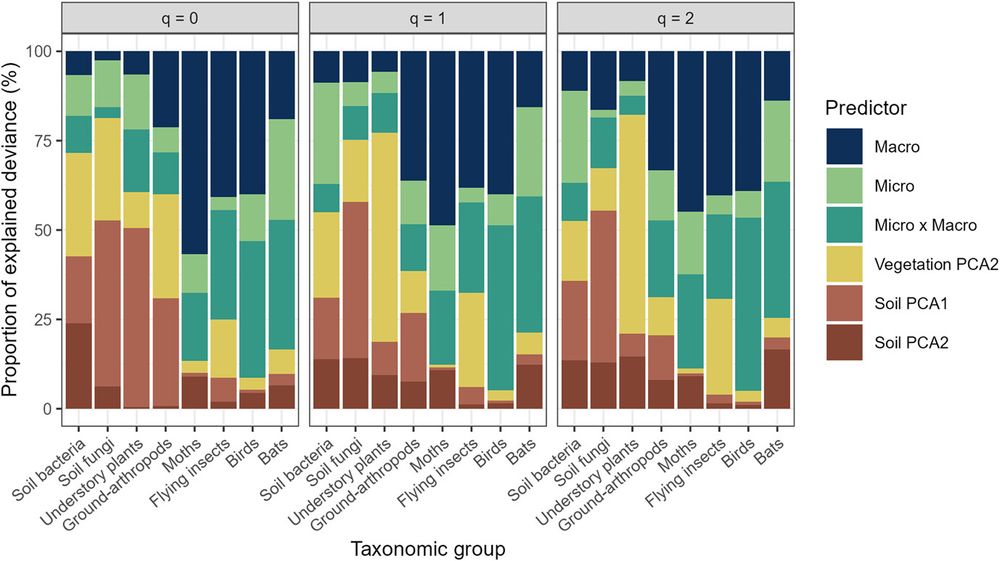
Assistant Professor @ucsantabarbara Global Change Forest Ecologist @switzernetwork @SmithFellows @PeaceCorps #BLM

#NewFramework: #CC effects on interactions🧪🌐🍁🌱
HUGE🙏4 legendary efforts: @rupertseidl.bsky.social @brian-j-harvey.bsky.social @julieedtree.bsky.social
tinyurl.com/3p97ztr5
Reposted by Joan Dudney

🌐🌏🌎🌍🧪🐠🐍🦋🦉🦇🌳🌲
shorturl.at/prp63
Reposted by Joan Dudney

link.springer.com/chapter/10.1...

Reposted by Ben Bond‐Lamberty, Joan Dudney

Reposted by Joan Dudney, Benjamin Wildermuth


Next week (26th November) at 11am CET, Alice Penanhoat @alice4science.bsky.social from Swedish University of Agricultural Sciences will talk about her interdisciplinary research on forest structure 🌲🌳🔍
Register here to join the zoom seminar:
lnkd.in/gcgh5qFE
Reposted by Joan Dudney

#biomass
@forestecosyst.bsky.social
www.sciencedirect.com/science/arti...
Reposted by Elena Litchman, Joan Dudney

Reposted by Joan Dudney

From 707 resequenced trees, researchers built a high-density map pinpointing 89 QTLs for growth, wood, and disease traits, boosting genomic selection accuracy by up to 21%.
🔗 link.springer.com/article/10.1...
#JFR #ForestryGenomics #Populus 🍁🌺🌱🌿
Reposted by Seth M. Munson, Joan Dudney

🔗 buff.ly/O9bovwm
Reposted by Joan Dudney


doi.org/10.1111/ele....
Reposted by Paul Caplat, Joan Dudney

Converting coniferous to broad-leaved forests in Europe could cut summer hot extremes by up to 1 °C — boosting climate effectiveness.
Read more 👇
🔗https://www.nature.com/articles/s41467-025-64580-y
#ForestNavigator #ClimateScience #Forestry #NatureComms


#1 Macro- and microclimate interactively shape species diversity of multiple taxa in mountain landscapes by L. Geres. doi.org/10.1002/ecog...
Reposted by Karen R. Lips, Adrián García‐Rodríguez, Joan Dudney


📄Simulated postfire tree regeneration suggests reorganization of Greater Yellowstone forests during the 21st century
doi.org/10.1002/ecs2...


High-resolution tree-ring data are dramatically improving our ability to estimate past climate. We’re now much closer to accurately tracking temperature changes—both today and across history!
Reposted by Darío Martin‐Benito, Joan Dudney


gmd.copernicus.org/articles/18/...
➡️ from Tanguy Postic's PhD, with many perspectives to simulate forests under CC
Reposted by Jens‐Christian Svenning, Oliver L. Phillips, Simon L. Lewis , and 19 more Jens‐Christian Svenning, Oliver L. Phillips, Simon L. Lewis, Ana S. L. Rodrigues, Ben Bond‐Lamberty, Mathias Disney, Pieter A. Zuidema, Patrick A. Jansen, Stephen D. Murphy, Tommaso Jucker, Markus P. Eichhorn, Andrew Hacket‐Pain, Ferran Sayol, Darío Martin‐Benito, Shan Kothari, Joan Dudney, Joshua S. Lynn, Jonathan von Oppen, Karl Andraczek, Orlando Schwery, Jonas Trepel, Benjamin Wildermuth



Reposted by Ingolf Kühn, Nicolas Gross, Joan Dudney

dx.doi.org/10.1002/2688... 🧪


Reposted by Joan Dudney

Read here: buff.ly/yFDdpAZ
Reposted by Joan Dudney

Check out our newly published paper to find out!
academic.oup.com/forestry/adv...
Reposted by Joan Dudney, Xavier Serra‐Maluquer

besjournals.onlinelibrary.wiley.com/doi/10.1111/...
jgpausas.blogs.uv.es/2025/10/16/p...
🧪🌎🔥🍁🌳🔥 wildfire @jappliedecology.bsky.social
Reposted by Joan Dudney, Benjamin Wildermuth

We - incl. @westobymark.bsky.social @biogeokreft.bsky.social and others - show that traits are linked to species’ colonisation and extinction probabilities on #islands — with direct implications for species persistence and the Equilibrium Theory of Island #Biogeography
Reposted by Joan Dudney

www.nytimes.com/2025/10/08/s...
Reposted by Joan Dudney

🌲🔥
Thanks to Anderegg Lab for hosting me, esp Joe Celebrezze. Was fun to be back at my UG alma mater.
@dudney-joan.bsky.social



